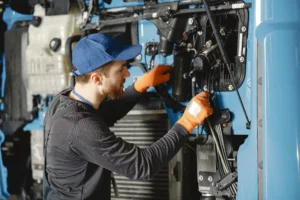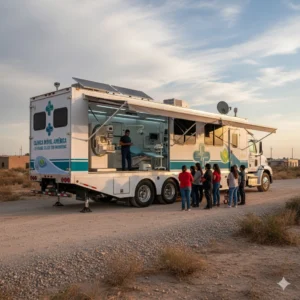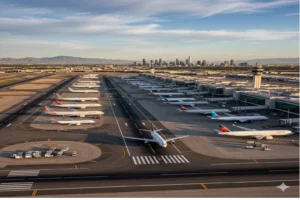A WalletHub study compared all 50 states to determine the best driving conditions
Road safety and quality are central concerns for drivers. And while the U.S. does not lead in road quality according to the World Economic Forum, it ranks 17th out of 141 countries evaluated.
A WalletHub study compared all 50 states using 31 indicators to determine the best driving conditions, evaluating everything from fuel prices to rush hour congestion and road quality. The results include rankings of states with the highest and lowest traffic congestion, as well as the highest and lowest fuel prices.

Best states for driving in the United States
WalletHub provides a comprehensive view of road conditions in the U.S., highlighting both positive and negative aspects. In their rankings, California has the highest traffic congestion, while West Virginia has the lowest, showing a difference of nearly 15 percentage points between the two states.
California remains at the top of the fuel price list, contrasting with Texas, which has the lowest prices. Hawaii and Washington also rank among the top five states with high prices, while Georgia and Oklahoma show similar percentages in terms of low prices.
The study evaluates all relevant rankings for drivers, allowing WalletHub to identify the top three states for drivers in 2024. The top three are as follows:

Iowa
Iowa stands out as the best state for driving due to its rural environment and low congestion index on urban interstate highways, with fewer than 25% experiencing traffic jams. Average driving distances in Iowa are short, generally less than 20 minutes, allowing residents to save significantly on vehicle costs. Additionally, the state has one of the lowest vehicle theft rates, providing a safe environment for drivers.

Georgia
Georgia is the second best state for driving in the United States. Recognized for having the highest number of gas stations in the country, it also enforces some of the strictest laws against driving under the influence of alcohol. However, it faces significant challenges regarding speeding and distracted driving. On the other hand, vehicle ownership costs are notably low in Georgia. Additionally, the state ranks third in terms of automotive maintenance costs and offers cheaper gasoline prices compared to other states.

Kansas
Kansas takes third place, highlighted for its improvements in road safety that have earned it this position. Recently, the state experienced one of the largest year-over-year decreases in traffic accident mortality rates, with a reduction exceeding 12%. Kansas also stands out for having a per capita extensive road network maintained in excellent condition, and for its low traffic congestion index. These conditions significantly contribute to its position as the third best state for drivers.

World Mental Health Day: how to care for truck drivers’ mental health
As part of World Mental Health Day, we focus on caring for the mental health of truck drivers. World Mental Health Day reminds us that

Solving the shortage of diesel technicians
The role of the transport industry in combating the shortage of diesel technicians: what should be done to solve it? In August 2025, the American

Mobile Clinics: The Unsung Heroes Bringing Healthcare to America’s Highways
The drivers of these massive trailers have become the unsung heroes of America’s roads, delivering life-saving medical services to every corner of the country.

Ending CDL reciprocity: the U.S. seeks stricter measures
New bill would require states to comply with the strict CDL regulations recently established. The U.S. House of Representatives has introduced new legislation aimed at

Cargo theft costs the transportation industry $18 million in losses
Cargo theft has been one of the most persistent issues facing the freight transportation industry so far in 2025. Cargo theft has been one of

Duffy Secures $41 Million to Save Essential Air Service as Shutdown Threat Looms
U.S. Transportation Secretary Sean P. Duffy announced on Wednesday that the Department of Transportation (DOT) has secured $41 million in additional emergency funding to sustain the Essential Air Service (EAS) program, a federal initiative that subsidizes commercial flights to rural and underserved communities across the United States.
